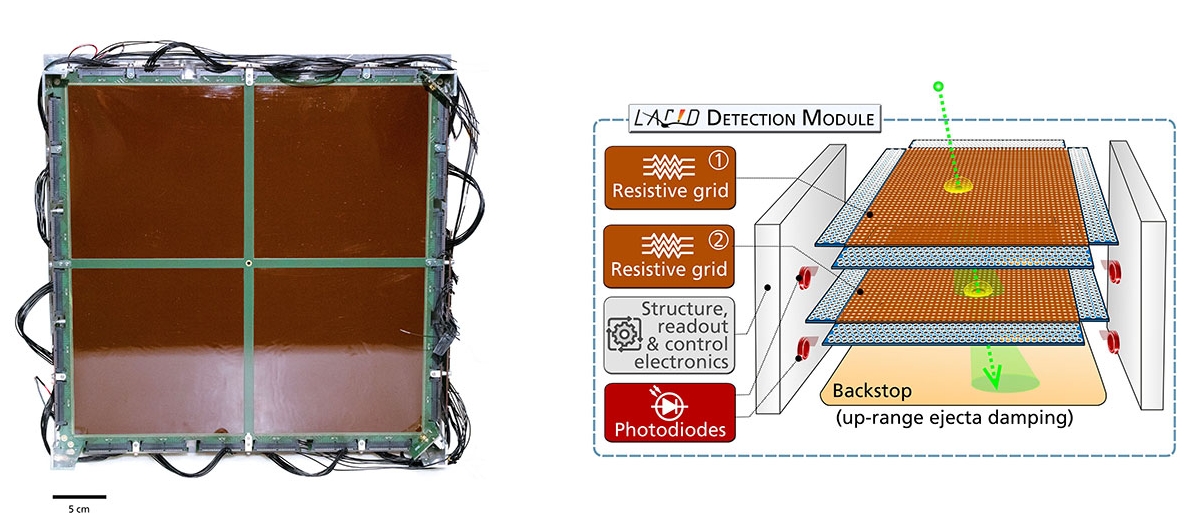Small space debris can severely damage satellites, but is difficult to observe. Fraunhofer EMI has developed a concept for ESA that records the speed, trajectory and size of tiny pieces of debris.
Space debris, human spaceflight remnants in orbit, threatens to impair the function of a satellite due to the high impact velocities of even small objects. Their small size and high energy density are not only dangerous but also the reason why they are difficult to observe. Ground-based measurements with radars and telescopes are limited to centimeter-sized objects. In-situ detectors can be used for smaller objects. Despite a long history of such detectors in orbit, their success rate is so low that space debris is one of the most unknown quantities in the orbital environment.
Fraunhofer EMI has investigated various detection concepts for the European Space Agency. The starting point for the development were ambitious requirements for the measurement accuracy, robustness and reliability of such a detector. The successfully developed concept of a “Large Area Low Resource Impact Detector”, LArID, consists of two thin layers that are penetrated by a space debris particle. The upper and lower surfaces of the layers are provided with conductive paths that are only 188 µm wide and aligned perpendicular to each other. The severing of these conductive paths during the impact leads to a loss of conductivity. By measuring the time of this event and the position of the severed conductors, the speed, path and size of the particle can be traced. Additional photodiodes measure the time of appearance of the plasma flashes during the impact as a redundant measurement.
A special design feature is the modularity of the detector. The electronics are integrated into the side walls of a base unit, the combination of which allows a large detection surface to be achieved. Following successful laboratory tests, we have outlined various mission scenarios on board the ISS as well as further development on satellites. In this way, we hope to make a contribution to the detection of space debris.
